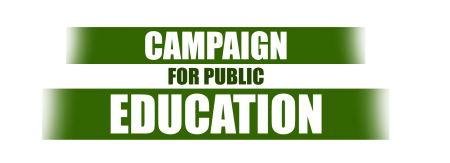Toronto’s ‘middle’ schools face axe
Toronto Star April 18, 2008 Louise Brown
Caught in the hurricane of hormones between childhood and the adult world, pre-teens have been called the toughest to teach – but budget woes threaten to change the way Toronto public schools handle these middle years.
The Toronto District School Board's new plan to consider phasing out many "middle" schools, as it merges costly small and half-empty schools, is sparking fresh debate about the value of these free-standing hubs of pre-adolescence.
While most agree this age is crucial – "the brain grows as much between 11 and 13 as it does between zero and 2," says Brampton vice-principal Julia Breen – research seems split on whether students fare better in their own "middle school" or as part of a school from junior kindergarten to Grade 8.
"There are arguments on both sides for how to teach these kids; kids who are dealing with hormones and changing their mood 500 times a day," said Breen, whose booming Cheyne Middle School has 740 pupils in Grades 6, 7 and 8.
"On the one hand, some say a JK-to-8 school is good because having little kids around can bring out empathy in these older kids.
"On the other hand, some say little kids take up a lot of a school's attention, when you need a staff that really understands the middle-school psyche," she noted. “Either way, you need to create a culture that reflects these older kids."
Toronto has an array of models inherited from its six former boards, from JK-to-Grade 8 schools to junior high schools where Grade 7 and 8 students "rotate" between classes for half the day, or all day, and "middle schools" where Grade 6, 7 and 8 students spend half a day with each of two teachers.
But a report from the General Asset and Program Planning working group, which trustees approved Wednesday night, suggests elementary schools be consolidated toward an "optimum" size of 450 students to trim costs and free up funding as enrolment falls by 4,000 students per year.
As part of wide public consultations to begin in six wards this June, the report suggests many middle schools be considered for phasing out in the coming years, not just to bolster elementary schools, but also to reduce the times students move from one school to another.
"There is definite research that the more transitions a student makes, the greater their chance of less success in school," said Gerry Connelly, the board's director of education. "Transitions matter."
She said the board should do whatever it can to decrease the number of times students need to switch schools. "And we find in this board that the most vulnerable students are often making the most transitions."
Not all middle schools would be eliminated, the report notes – especially those with specialized facilities like music rooms and technical equipment.
"Re-configuration of grades, where it occurs, should maintain or improve space to offer appropriate programs," said the 42-page blueprint for consolidating schools.
Closing all middle schools, it notes, "would require disruption across hundreds of schools, and would add significant unnecessary costs."
Across the United States, several jurisdictions from Portland to Philadelphia have or are moving away from the middle school model.
Last December, the District of Columbia announced it too is moving toward kindergarten to Grade 8 schools.
The research is mixed; some has shown better test scores among students in K-8 schools, others no difference. A study of Philadelphia's system, however, found that students felt safer and better about themselves if they'd been in a K-8 school. Other studies have found fewer discipline problems among Grade 6 students in K-8 schools compared with middle schools.
The problems with middle schools, some researchers say, is that children arrive from various feeder schools and are preoccupied with finding their place in a new school.
Trustee Gerri Gershon said in her ward of Don Valley West, only two schools are junior kindergarten to Grade 8 and the rest a mix of models.
While she said "dissolving junior highs" will come at some point, families tend to prefer the tight-knit community of a K-to-8 school, and in fact ask for them.
"They like the warmth and caring and sense of family," she said.
Veteran Grade 7/8 teacher Connie Stella of Brampton's Great Lakes Public School has taught in both types of school and says both can work if they provide this "vulnerable" age with support, leadership programs and a building designed with their age group in mind, with a cafeteria, a central meeting place and an auditorium.
"You've got to really love that age group – and for the most part I do, because you can do so much to help them make the transition, and make good choices that will influence who they become in the next five years."

